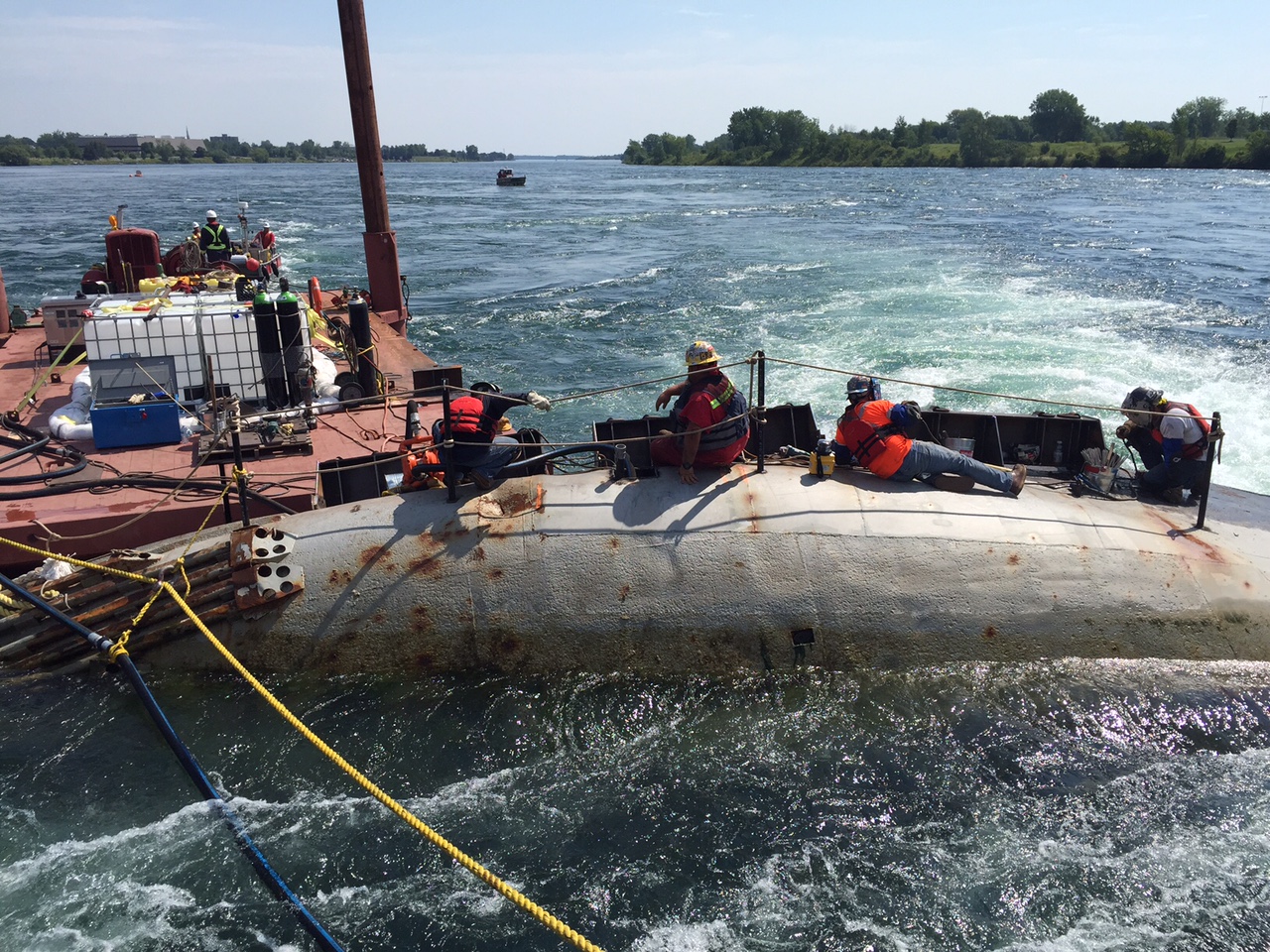CORNWALL, Ontario – A pair of tugboats that capsized on the St. Lawrence River this summer were not strong enough to do the work being completed, says the Transportation Safety Board of Canada.
Stéphane Chevalier, a senior investigator with the TSB, said in an interview the national agency that works to advance marine safety has determined the tugs were ill-equipped for moving a large barge on the river in late June.
“The suitability of the tugs…had not been thoroughly assessed,” he said in reading from a Marine Safety Information Letter that was written in the wake of an investigation into how the Lac Manitoba and LCM 131 capsized on the river this summer.
On June 22 the Lac Manitoba was trying to position the barge on the river. The barge was being used to help with the demolition of the Seaway International Bridge.
During the work the tugboat lost power and slammed into the side of the barge. The current, which TSB officials estimate was between five and 7.4 knots on that day, quickly forced water into the tug and it capsized. Its crew escaped without loss of life.
The smaller support vessel, the LCM 131, continued work at the site, trying to secure the barge via steel cable to a bridge footing, when it became swamped by the onrushing current. Its crew also escaped without loss of life.
“Both tugs heeled over because of the strong current,” said Chevalier.
The marine safety letter compiled by the TSB has been addressed to all the companies involved in the incident that day, including American Bridge, Nadro Marine, McKeil Marine and Westfront Construction.
Company officials were not immediately available for comment.
The letter suggests more work could have been done to augment safety at the site of the sinkings.
For example, a boat that was supposed to be set aside for resuce operations in the event of disaster was, for a time, employed to transfer cabling, said Chevalier.




